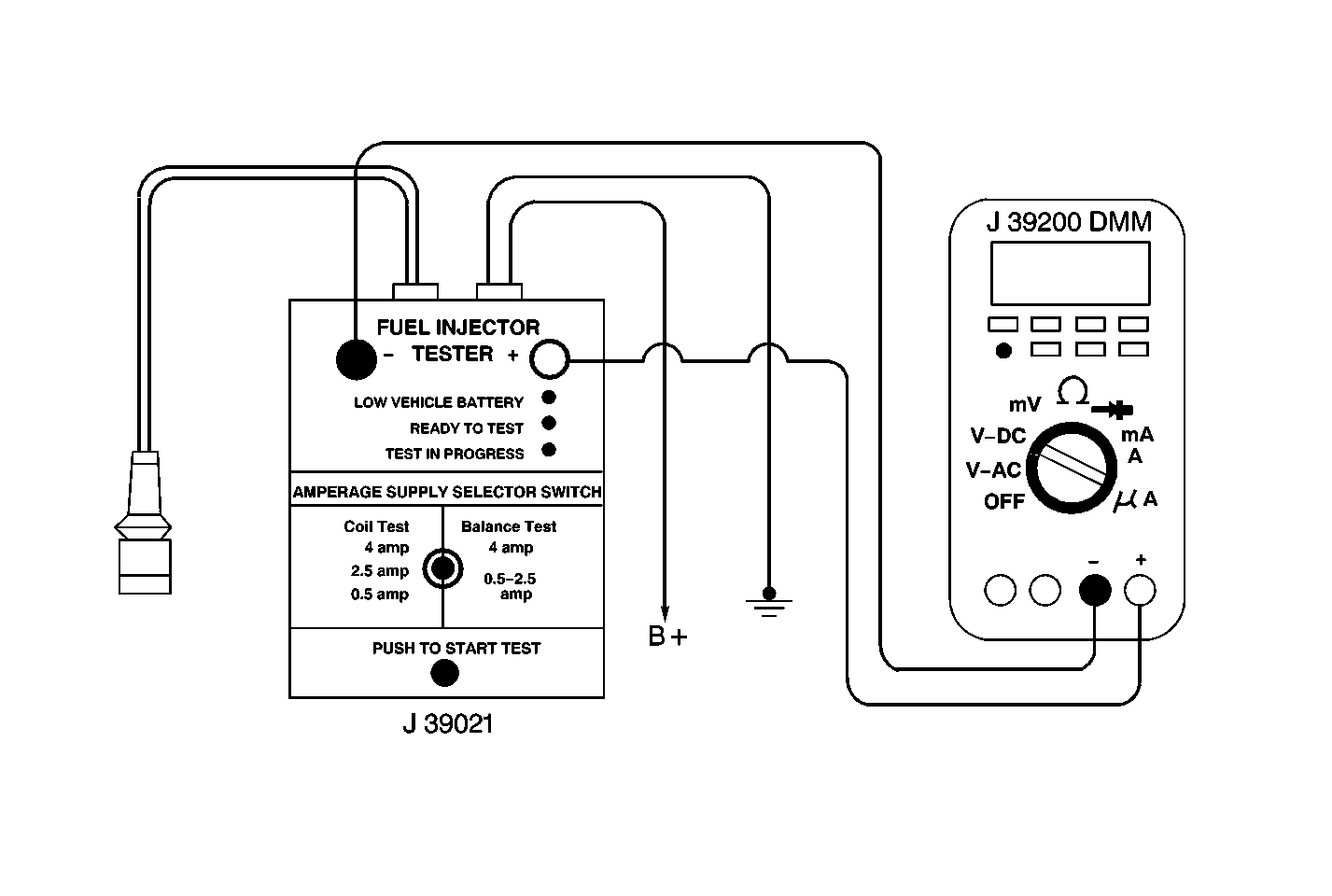| Table 1: | Example (Typical) |
| Table 2: | Fuel Injector Coil Test Procedure - ECT Between 10°C - 35°C (50°F - 95°F) |

Test Description
Caution: Wrap a shop towel around the fuel pressure connection in order to reduce the risk of fire and personal injury. The towel will absorb any fuel leakage that occurs during the connection of the fuel pressure gage. Place the towel in an approved container when the connection of the fuel pressure gage is complete.
Resistance Ohms | Voltage Specification at 10°C-35°C (50°F-95°F) | |
|---|---|---|
11.4-12.6 | 5.7-6.6 | |
Fuel Injector Number | Voltage Reading | Pass/Fail |
1 | 5.8 | P |
2 | 5.9 | P |
3 | 6.2 | P |
4 | 4.3 | F |
Step | Action | Value(s) | Yes | No |
|---|---|---|---|---|
1 | Did you perform the Powertrain On-Board Diagnostic (OBD) System Check? | -- | Go to Step 2 | |
2 | Use a scan tool in order to observe the engine coolant temperature (ECT). Is the ECT within the specified range? | 10°C-35°C (50°F-95°F) | Go to Step 3 | |
Notice: In order to prevent flooding of a single cylinder and possible engine damage, relieve the fuel pressure before performing the fuel injector coil test procedure. Important: Inspect the ECT again to ensure that the correct chart is being used. Important: The voltage reading may rise during the test. Did any fuel injector have large fluctuations in voltage that do not stabilize or a voltage reading outside of the specified range? | 5.7-6.6 V | Go to Step 4 | ||
4 | Replace any malfunctioning fuel injectors. Refer to Fuel Injector Replacement . Did you complete the repair? | -- | -- |
